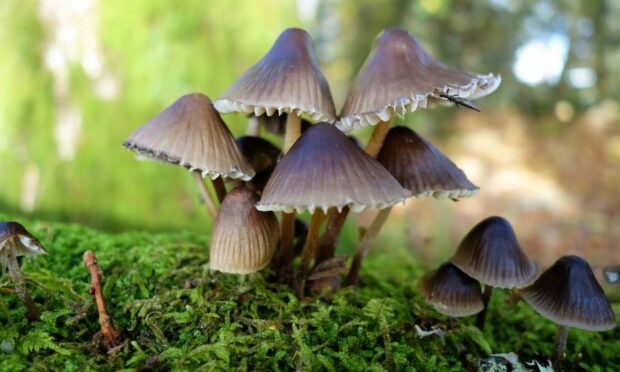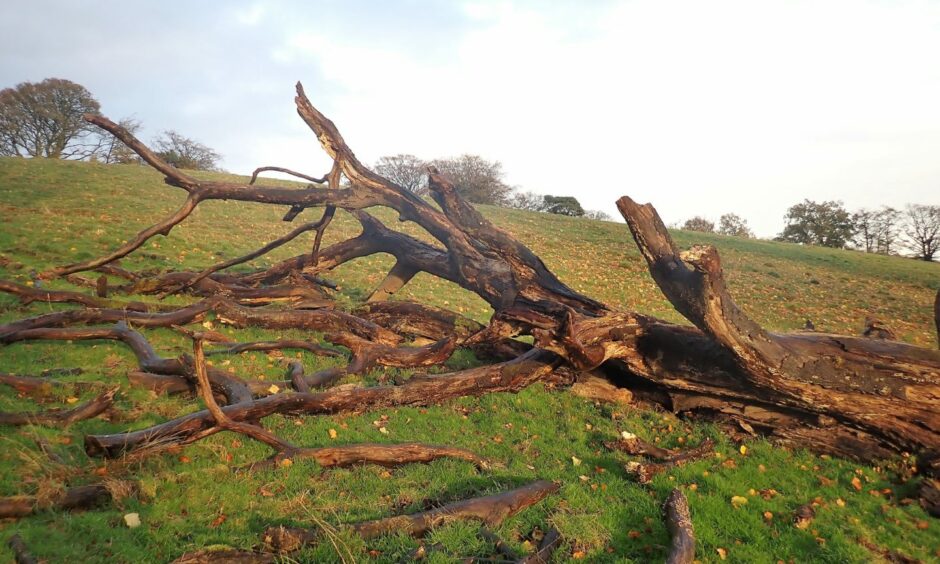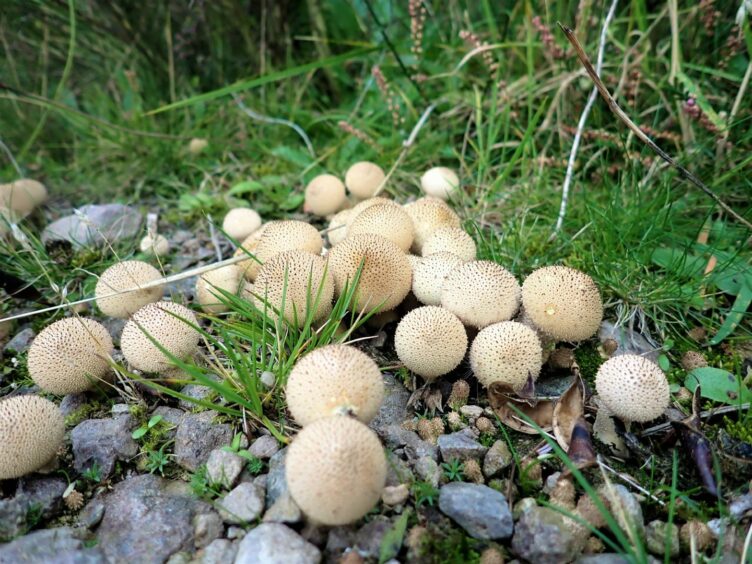It was a magnificent fallen leviathan, a tumbled beech on a hill pasture, which in the fading light of dusk resembled a skeleton, with its branches pointing heavenwards as if in a plea for salvation.
This ghostly giant always makes me stop in my tracks and give cause for reflection.
The bark has long crumbled away, and the trunk beneath is darkened with age and riddled with the tiny holes of boring insects, and the deep scars of rot.
On placing my hand upon the trunk, I can almost feel the pulse of life within.
Place of food and shelter
This is a place for invertebrates to feed, seek shelter and to lay eggs – and a place, too, for woodpeckers to probe and inspect with eager anticipation.
For me, it is the fungi that are the overwhelming draw of this decayed giant, and every time I visit, I carefully circle the trunk and mentally catalogue the different types.
An elliptical, vibrant scar of wrinkled crust fungus coated one section in a creeping encrustation of various colours, including yellow and orange.
There was brittle cinder fungus, too, a coating of grey fringed with white, which will eventually turn black and become brittle, with the appearance of charred wood.
Brittle cinder is a pathogenic fungus, and perhaps its presence is one reason why this great tree met its demise.
Bonnet mushrooms clustered in sheltered crevices on the trunk, with their exquisite bell-shaped caps scored with radiating grooves.
Further along the trunk, I found jelly-ear fungus, embedded like warm, soft discs into the tree surface.
Around the tree, by some of the broken branches, there was a proliferation of puffballs growing in the grass, and I hunkered down to gently squeeze one, which released a powder-puff of spores that swirled away in the breeze like billowing smoke.
Excellent autumn
This has been an excellent autumn for fungi – although possibly this is because I have taken a special interest in these natural wonders this season and have been actively seeking them out.
My garden lawn proved a particular treasure trove.
Here, a proliferation of waxcaps of various species have thrived, displaying vibrant orange and yellow colours.
The stars, though, were the pink waxcaps, with their stunning pink caps and white stalks.
They have never appeared on the lawn before and materialised as if conjured by a magical spell of nature.
While the fallen beech on the nearby hill pasture with its wonderful array of fungi is a cause for celebration, there is much to worry about too.
This tree is just one of many other beeches, oaks, and limes that were planted in this pasture a long time ago as field boundaries and shelter belts for cattle.
Yet, there are no green shoots of saplings, and no natural regeneration is taking place because of the grazing.
Unless new and managed planting occurs, all the trees will one day become tumbled relicts, still giving succour for a period to the agents of decay, but once turned to dust, there will be nothing left at all.














Conversation